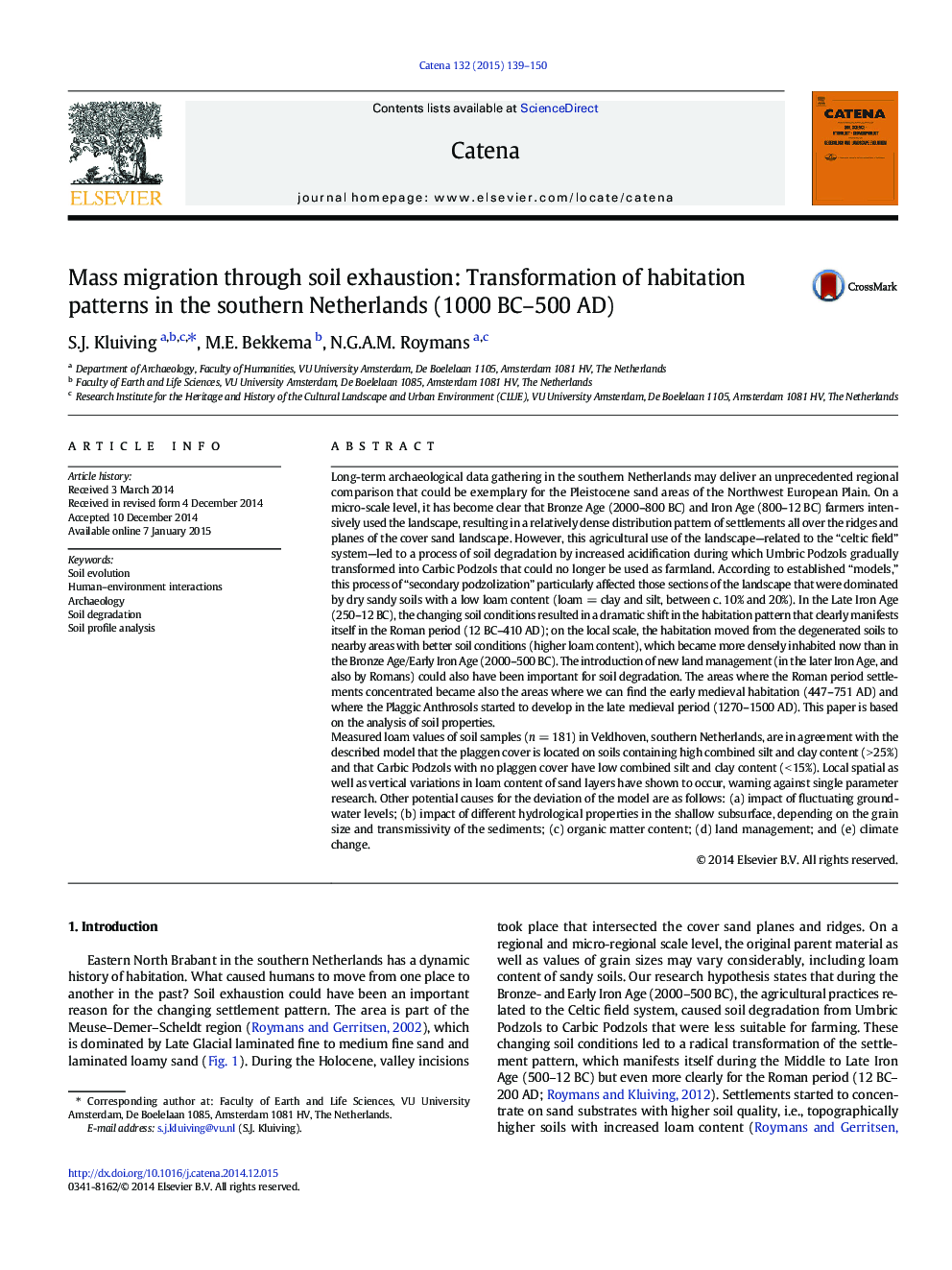| Article ID | Journal | Published Year | Pages | File Type |
|---|---|---|---|---|
| 4571169 | CATENA | 2015 | 12 Pages |
•Landscape transformation is causing mass migration in the Iron Age (800–12 BC).•Soil degradation by increased acidification appears to be caused by agriculture.•Archaeological evidence and grain size analysis are related to soil dynamics.•Case study results from the Netherlands with potential for European correlation.•Complex set of soil degeneration factors needs to be interdisciplinary tested.
Long-term archaeological data gathering in the southern Netherlands may deliver an unprecedented regional comparison that could be exemplary for the Pleistocene sand areas of the Northwest European Plain. On a micro-scale level, it has become clear that Bronze Age (2000–800 BC) and Iron Age (800–12 BC) farmers intensively used the landscape, resulting in a relatively dense distribution pattern of settlements all over the ridges and planes of the cover sand landscape. However, this agricultural use of the landscape—related to the “celtic field” system—led to a process of soil degradation by increased acidification during which Umbric Podzols gradually transformed into Carbic Podzols that could no longer be used as farmland. According to established “models,” this process of “secondary podzolization” particularly affected those sections of the landscape that were dominated by dry sandy soils with a low loam content (loam = clay and silt, between c. 10% and 20%). In the Late Iron Age (250–12 BC), the changing soil conditions resulted in a dramatic shift in the habitation pattern that clearly manifests itself in the Roman period (12 BC–410 AD); on the local scale, the habitation moved from the degenerated soils to nearby areas with better soil conditions (higher loam content), which became more densely inhabited now than in the Bronze Age/Early Iron Age (2000–500 BC). The introduction of new land management (in the later Iron Age, and also by Romans) could also have been important for soil degradation. The areas where the Roman period settlements concentrated became also the areas where we can find the early medieval habitation (447–751 AD) and where the Plaggic Anthrosols started to develop in the late medieval period (1270–1500 AD). This paper is based on the analysis of soil properties.Measured loam values of soil samples (n = 181) in Veldhoven, southern Netherlands, are in agreement with the described model that the plaggen cover is located on soils containing high combined silt and clay content (> 25%) and that Carbic Podzols with no plaggen cover have low combined silt and clay content (< 15%). Local spatial as well as vertical variations in loam content of sand layers have shown to occur, warning against single parameter research. Other potential causes for the deviation of the model are as follows: (a) impact of fluctuating groundwater levels; (b) impact of different hydrological properties in the shallow subsurface, depending on the grain size and transmissivity of the sediments; (c) organic matter content; (d) land management; and (e) climate change.
